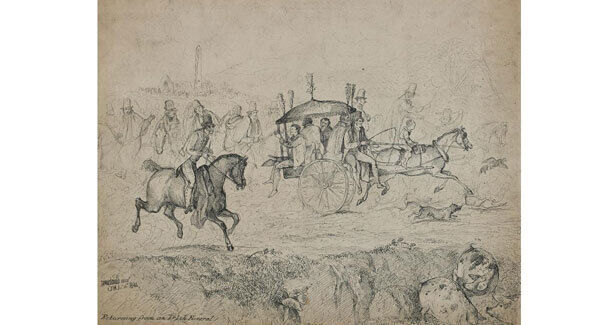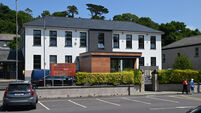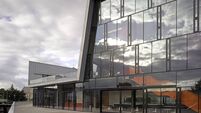Cork artist Daniel MacDonald’s hunger for truth

CORK has produced well-known artists, such as James Barry, Daniel Maclise and John Hogan, but who, today, has heard of ‘Honest Dick’ Millikin, Charles Scottowe or John Henry Noblett? They were prominent in their day and many other, worthy artists have also slipped into obscurity — for example, the McDaniel/Macdonald dynasty.
Daniel MacDonald (1820-1853) did the only known painting of the Great Famine, which was titled ‘An Irish Peasant Family Discovering the Blight of their Store’.
It was exhibited in London in 1847, and is now in the National Folklore Collection, UCD (bequested by Cecil Woodham Smith, in gratitude for the college’s support when she was writing Great Hunger: Ireland 1845-49).
MacDonald is the subject of a forthcoming exhibition and is being re-evaluated as an artist. Not only was Daniel one of the most interesting artists of his time, but his father, James, and his sister, Jane, were also noted artists.

The MacDonalds were Scottish bluebloods. Daniel’s father, James, (1788-1865) of Sleat, Isle of Skye, married a Cork woman, Catherine McCarthy, from Kilcolman, Co Cork, and moved to Cork City. James (who was also known as McDaniel) was an Annandale claimant.
The peerage dispute spanned 193 years, but when the House of Lords finally settled the matter, in 1985, James’ claim was vindicated. According to some genealogical accounts, James also succeeded as 8th Baron MacDonald of Castleton, Isle of Skye. Much work, however, remains to be done on this lineage. As the eldest son, had he lived, Daniel would have inherited the barony.
James was a painter, caricaturist, art critic, and musician. When he came to Cork is unknown (perhaps he was born there), but he was there for the first Munster Exhibition of 1815.
He was involved with the Cork Literary and Scientific Society, founded in 1820, whose members were obliged by the society’s statutes to produce “essays” by rotation upon any subject, “save polemics or politics”. James produced many papers, exploring the interconnections between art and science.
But the community of artists in Cork was, according to John Windele, the antiquarian, riven by “professional jealousies and bickerings”. Whether for that, or other reasons, the family left Cork for London in the mid-1840s — this was par for the course, when patrons were few and far between in an increasingly troubled 19th-century Ireland.
James had four children: the prodigy-artist Daniel, whose life was cut tragically short when he died of fever, in 1853; Jane, an artist of note; James Alexander, a Wesleyan minister; and the remarkable Dr, Prof., Sir John Denis MacDonald K.C.B., F.R.S., M.D. St. And., M.R.C.5.Eng., R.N., Inspector-General of Royal Navy Hospitals and Fleets, explorer, natural scientist and microscopist of repute.
In the first half of the 19th century, Irish artists with ambition went to London. There, artists painted for an elite market and patrons would not purchase pictures of rotting potatoes, emaciated bodies or diseased corpses to hang in their homes.
Irish artists would have considered it improper to turn the Famine into art; the few British artists that did also muted the horror. So, Daniel Macdonald’s Famine painting is remarkable. Although the 1847 British Institution, where it was shown, was excoriated for its mediocrity, the response to the only painting of the Irish Famine was predominantly silence.
The favourite painting that year was also of an Irish subject, but painted by an English artist, Frederick Goodall. British audiences found the Irishness, the sentimentality and faux normality of Goodall’s ‘Irish Courtship’ a comforting analgesic to the reality of Famine and the raw distress evident in the MacDonald painting.
It was not so much a question of how to convey contemporary horror adequately, but the unacceptability of conveying it at all. As the only contemporary painting of the Famine, its importance in Irish art and social history cannot be overstated.
MacDonald’s ‘Irish Peasant Children’ (Ireland’s Great Hunger Museum, Quinnipiac University, Connecticut), was also painted at the height of the Famine, and although it does not represent the Famine, it speaks of it. The figures are dominant, suggesting an awareness of contemporary art, but also of unfolding social and political events.
The children represent three faces of Ireland: beautiful, contrary, and potentially dangerous; the swirling mist hints at the national tragedy, social disintegration and political reprisals to come. Yet the seductive beauty of the painting made it palatable to audiences normally hostile to such material.
Notwithstanding the exodus of artists seeking fame and fortune, Cork was a vibrant place of culture in the 1820s, ’30s and, until the Great Famine, the ’40s. And the McDaniel/MacDonalds were at the centre of scientific and cultural developments.
Daniel, born in Cork in 1820, made his debut as an artist at the age of 13, when he contributed sketches to a work of literary endeavour, The Tribute (1833). By the age of 20, he was on the exhibition circuit in Cork, with accomplished paintings such as ‘The Eagle’s Nest, Killarney’, and he exhibited three paintings with the Cork Art Union in its first year, also in 1841.
Aged 22, he was on the managing committee of the Art Union, where he exhibited eight works in 1842, including ‘Sídhe Gaoithe/ The Fairy Blast’. Between 1840 and 1844, prior to his move to London, Daniel produced a prodigious number of paintings and sketches, and received high praise from local newspapers, notably The Cork Examiner.
The move to London was a success for Daniel. By May, 1845, many members of the royal family and of the aristocracy had sat for him, including Prince George and Princess Mary of Cambridge, Lady Anglesea, Lord Sudeley, and Lady Douro.
Around this time, Queen Victoria acquired a drawing, ‘Returning from a Funeral’, by MacDonald, which she kept in a precious album (to this day in the Royal Collections). A companion sketch hangs in Ireland’s Great Hunger Museum.
In view of his new milieu, it is all the more extraordinary that MacDonald exhibited ‘An Irish Peasant Family Discovering the Blight of their Store’ in the heart of the Empire, and at the height of the Famine.
Ireland’s Great Hunger Museum is planning an exhibition of the work of Daniel MacDonald in the near future. Several of his paintings and sketches, and works attributed to him, are in the Crawford Gallery, the first to recognize MacDonald’s importance as a painter of Irish life.
However, many paintings are missing and likely to be still in the vicinity of Cork today and, undoubtedly, there are family letters and papers to resurface that would add to the rediscovery of this wonderful artist
Now is the time to scour the attics and cellars of Cork for his work, and for the works of his father and sister, and, if you have one, or any information on the family, please contact Prof. Niamh O’Sullivan, curator of Ireland’s Great Hunger Museum: nosullivan18@gmail.com












